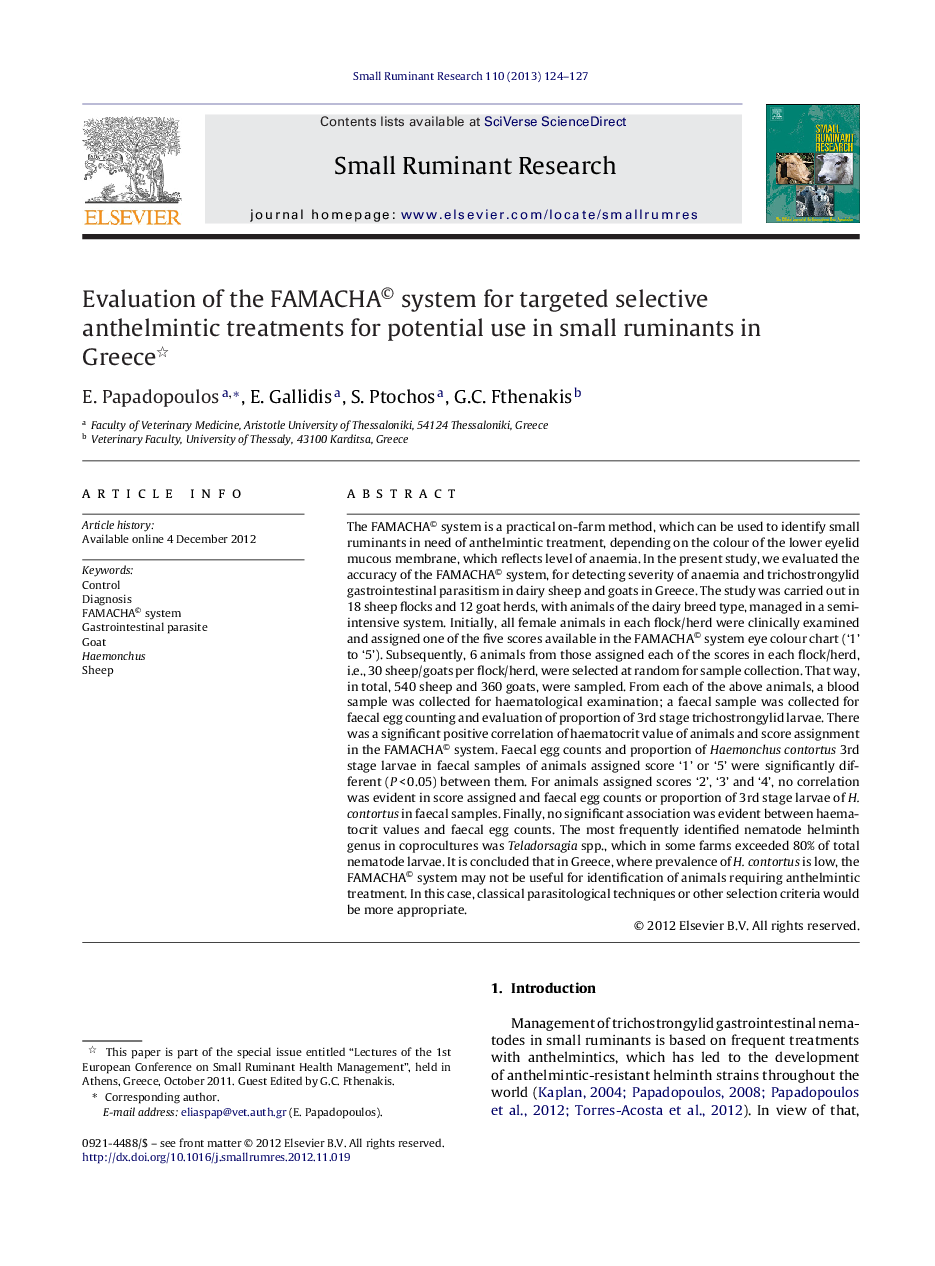| کد مقاله | کد نشریه | سال انتشار | مقاله انگلیسی | نسخه تمام متن |
|---|---|---|---|---|
| 2457130 | 1554382 | 2013 | 4 صفحه PDF | دانلود رایگان |

The FAMACHA© system is a practical on-farm method, which can be used to identify small ruminants in need of anthelmintic treatment, depending on the colour of the lower eyelid mucous membrane, which reflects level of anaemia. In the present study, we evaluated the accuracy of the FAMACHA© system, for detecting severity of anaemia and trichostrongylid gastrointestinal parasitism in dairy sheep and goats in Greece. The study was carried out in 18 sheep flocks and 12 goat herds, with animals of the dairy breed type, managed in a semi-intensive system. Initially, all female animals in each flock/herd were clinically examined and assigned one of the five scores available in the FAMACHA© system eye colour chart (‘1’ to ‘5’). Subsequently, 6 animals from those assigned each of the scores in each flock/herd, i.e., 30 sheep/goats per flock/herd, were selected at random for sample collection. That way, in total, 540 sheep and 360 goats, were sampled. From each of the above animals, a blood sample was collected for haematological examination; a faecal sample was collected for faecal egg counting and evaluation of proportion of 3rd stage trichostrongylid larvae. There was a significant positive correlation of haematocrit value of animals and score assignment in the FAMACHA© system. Faecal egg counts and proportion of Haemonchus contortus 3rd stage larvae in faecal samples of animals assigned score ‘1’ or ‘5’ were significantly different (P < 0.05) between them. For animals assigned scores ‘2’, ‘3’ and ‘4’, no correlation was evident in score assigned and faecal egg counts or proportion of 3rd stage larvae of H. contortus in faecal samples. Finally, no significant association was evident between haematocrit values and faecal egg counts. The most frequently identified nematode helminth genus in coprocultures was Teladorsagia spp., which in some farms exceeded 80% of total nematode larvae. It is concluded that in Greece, where prevalence of H. contortus is low, the FAMACHA© system may not be useful for identification of animals requiring anthelmintic treatment. In this case, classical parasitological techniques or other selection criteria would be more appropriate.
Journal: Small Ruminant Research - Volume 110, Issues 2–3, March 2013, Pages 124–127